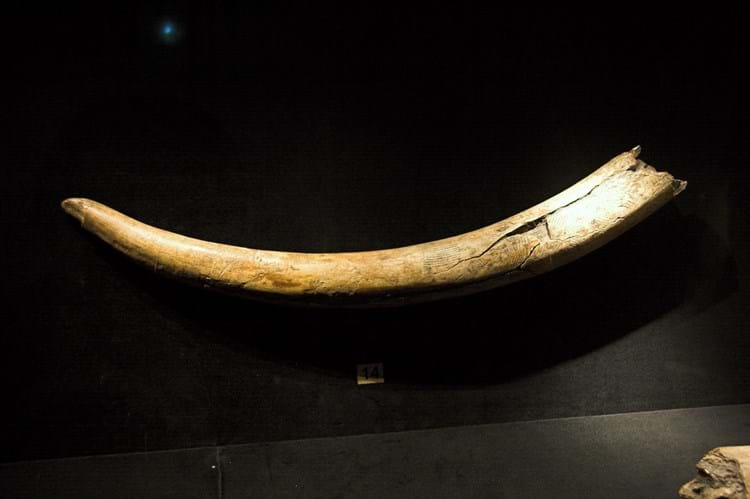
At the global CITES summit (Conference of the Parties) in Geneva today (Thursday, 22 August), the 183 signatories to the treaty are considering whether to list the mammoth as a threatened species so that trade in its ivory can be regulated by CITES restrictions.
The 1973 Convention on International Trade in Endangered Species (CITES) regulates the buying and selling of animal and plant species at risk of extinction around the world.
The Israeli delegation is proposing to include mammoths under CITES, whereby an exporting country would have to prove the ivory came from a mammoth.
Some conservationists argue mammoth ivory is hard to distinguish from the elephant variety and is being passed off as the latter, helping to fuel modern elephant poaching.
Mammoth ivory, known as 'ice ivory', appears on the antiques market in the form of carved ornamental tusks, boxes and jewellery.
Kim McDonald of The Taxidermy Law Company, and a specialist on how CITES applies to antiques, told ATG that the administration of such a ban would "prove a conundrum".
"The possible inclusion of a long extinct species because of its similarity to other ivories will aid the confusion and not stop the illegal trade in modern ivory," he said. "With a world driven by supply and demand, unless we change the mindset, the latter will continue to exist."
Voting on all proposals at the CITES conference will be held next week.
Trade body warning
Trade bodies such as BADA have long advised sellers of objects featuring mammoth ivory of the need to be absolutely clear they have identified the correct species.
Whole mammoth tusks, unlike those of elephants, grow in spiral form. Mammoth ivory also has an iron phosphate that can give it a blue-ish hue.
In some US states, trade in types of ivory additional to the elephant variety – including that of the mammoth – is prohibited because of the perceived difficulties of determining between species.
Israeli proposal
Proposals at the summit, which runs from August 17-28, need a two-thirds majority among signatory countries to pass in voting on the event's final two days. The CITES summit occurs every three years.
The Israeli delegation proposal reads: “Since mammoth ivory trade is almost totally unregulated and undocumented... and because mammoth ivory is not easily distinguished from elephant ivory, there is a tangible risk of illegal international trade in elephant ivory being facilitated by deliberately mislabelling specimens of elephant ivory as mammoth ivory in order to avoid the requirements of this Convention.”
The listing of the mammoth would be the first time an already-extinct animal is covered by CITES.
Indian rosewood plea
At the Geneva meeting, CITES signatories are considering a total of 56 proposals covering 36,000 species.
A delegation from India, supported by Bangladesh and Nepal, is proposing the deletion of Indian rosewood or dalbergia sisoo from the long list of threatened varieties, arguing that the wood is available in abundance in the country.
Furniture and guitars made in the 1970s onwards used Indian rosewood, as the cost of Brazilian varieties rose.
Brazilian rosewood, or dalbergia nigra, was a favourite material for Regency cabinet makers and Scandinavian mid-century modernist furniture makers.
However since 1992, Brazilian rosewood has been CITES-listed in the convention’s most protected category – Appendix 1 (EC Annex ‘A’). While antiques made of rosewood acquired before 3 March 1947 are exempt from sales controls, under the CITES antiques derogation, furniture made after this time requires an Article 10 certificate for trade purposes.
Taxidermy Law's Kim McDonald said a possible de-listing of Indian rosewood would be "a step in the right direction".
UK elephant ivory trade ban
A near-total ban on the UK trade in elephant ivory is due to come into force later this year, though first it faces a judicial challenge from antiques dealers and collectors in October.
The ban may be extended to cover mammoths, hippos, walruses and narwhals, amid MPs’ concerns the ban on one form of ivory could increase pressure on another.
Read ATG's guide to the UK ivory ban here.





